Overall, I believe my personal study on Occupation vs Liberation is a success. I believe my photoshoots and experiments with editing have yielded many strong images which I have included into my photobook. I believe my final prints represent a good variety of images included in my photobook. I believe my personal study essay fits quite well with certain aspects of my coursework project as it focuses on landscape manipulation and conservation. I have created responses to all of the photographers from my essay: manipulated landscapes from photoshoots 2 and 4 responding to Andreas Gursky, and objective angle photographs from photoshoots 2 and 3 responding to Hilla & Bernd Becher. In my future projects, I would like to develop a more thorough concept which would allow me to experiment in many different aspects as I felt like the concept which I focused on: recording bunkers and German defences, was quite narrow and limiting.
All posts by Filip S
Filters
FINAL PRINTS
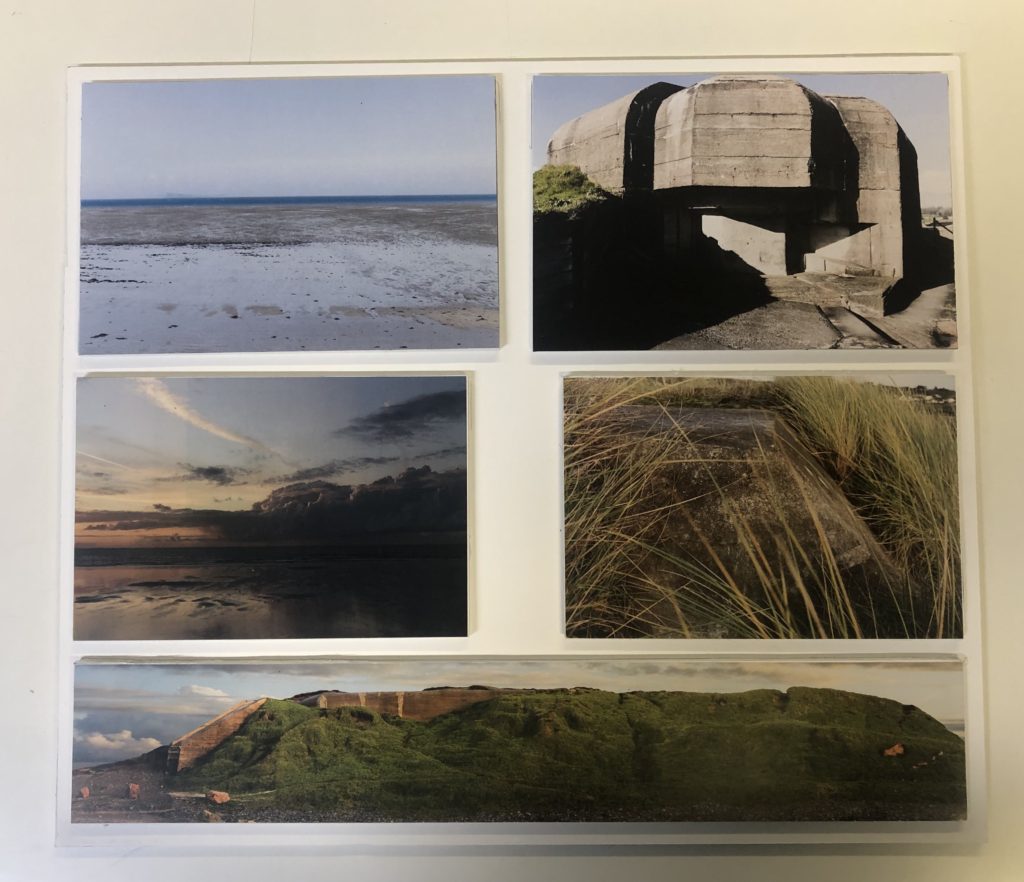

Photobook
Personal study: How has the landscape been conserved or manipulated throughout photography? – DRAFT
“This medium, which we, for official purposes like passports and school IDs, trust to be an accurate picture of the world, has always been something that can be lent to fiction as well as to fact,” – Andreas Gursky (Nayeri F. 2018)
Introduction
Whether it’s a portrait for identification, a photograph in a news story, or an image from a historic event, photography is often used to present many aspects of our lives as fact. Many photographers have challenged this ideology by presenting their works as half-truths, deliberately misleading the audience. Andreas Gursky produces landscapes which have been digitally stitched together or altered, on the first viewing the audience is misled into believing the photograph is a realistic representation. However, on closer inspection, the viewer can see repeated patterns and subjects in the image which uncover it as forged and manipulated. There are, however, photographers who also strive to conserve the landscape in their work. Bernd and Hilla Becher captured images of industrial architecture and landscapes: including water towers, coal bunkers, gas tanks, factory facades, and blast furnaces. The Becher’s scientific approach to recording the subjects often found the images to always be captured at the same ‘objective’ angle and later arranged into grids to form typologies like that “of a botanist” (British Journal of Photography 2017: Line 55).
Both Gursky and the Bechers are associated with post-modernism. Gursky’s work revolves more on utilising new technologies such as Photoshop and image editing software to manipulate and stitch his landscapes together. With the industrial subjects often considered by viewers as mundane, the Becher’s typologies revolved around industrial architecture as their subjects. The typologies unintentionally challenging modernist works by ultimately favouring content over form, mood or a grand narrative. In my practical work, I intend on using Photoshop to stitch images together to create manipulated landscapes with as a response to Gursky. When responding to the Bechers, I intend on taking objective angle images of bunkers and defenses used during the German occupation of Jersey.
Historical Context
Photography has been the subject of manipulation by many photographers and in many photographic movements since the early years of its invention, whether the image has been altered using digital programs or having photos framed through using Roger Fenton, widely seen as the first official war photographer, documented the events of the Crimean war in the 1850’s. One of his most popular images, also one of the earliest photographs documenting warfare; ‘Valley of the Shadow of Death’ (lower), pictures a road littered with cannonballs from recent battles including the siege of Sevastopol. Many people back in Britain believed this to be an accurate representation of the battles which took place in the Crimean Peninsula. However, in 1981 a second photograph of the site taken by Fenton (upper) was uncovered; one with significantly fewer cannonballs. It is currently believed the second photograph was the original, and the first was staged by Fenton where extra cannonballs were added to the site “to make the scene appear more dramatic” (Van Erp, Bright 2019:77).
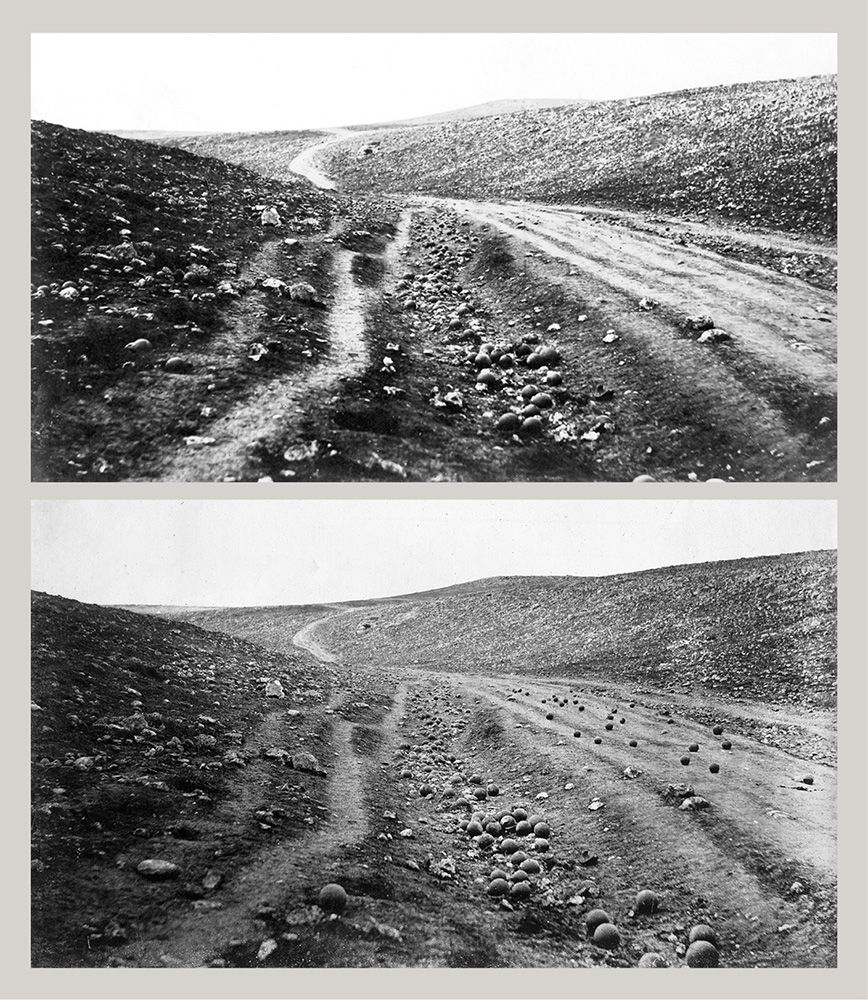
Manipulation has also been present in Pictorialism since the dawn of the movement, where photographers such as Peter Henry Emerson and the photographers from the Vienna camera club used ennobling processes such as gum or bromoil printing with the intentions of making their photographs look like paintings or drawings. Pictorialism was the first photography-specific movement originating in the 1880’s, within the first couple decades since the invention of the daguerreotype in the late 1830’s. When photography was first developed and widely accessible around the world, it was used to accurately record the surroundings. Eventually, photography was beginning to be used as an art-form. This, however, resulted in the masters and artists from other fields of art, such as; sculpture and fine art, rejecting photography. As an act of persistence, the Pictorialist movement was formed and Pictorialist photographers made sure to manipulate their photographs using the previously mentioned bromoil and gum printing, to make the images seem as if they were painted. Photographers adopted painting “styles and ideas to demonstrate parity” (The Art Story: paragraph 3, line 2) between fine art and photography, and to “increase it’s artistic impact” (The Art Story: paragraph 2, line 6).

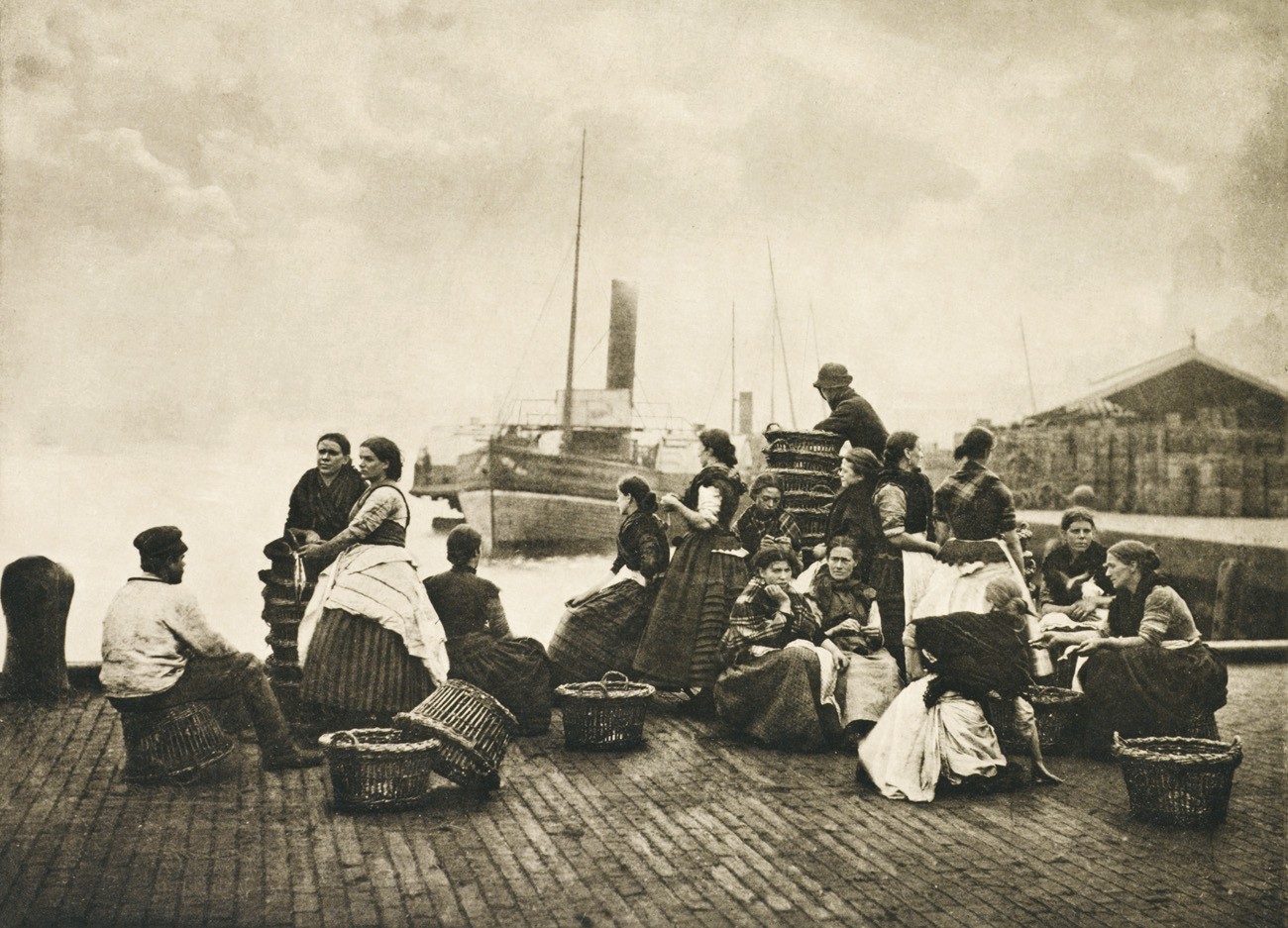
Andreas Gursky
Manipulation is most notably associated with the post-modernist movement, where the use of new technologies is embraced in producing images. A well known photographer who primarily produces images through the use of digital programmes is Andreas Gursky. Gursky digitally stitches images together to create artificial landscapes with immense detail, “each one is always a world of its own, created” (Sawa). Gursky achieves this effect by photographing many zoomed in sections using two side by side large format cameras, one with a slight wide angle lens, and the other using a standard lens.
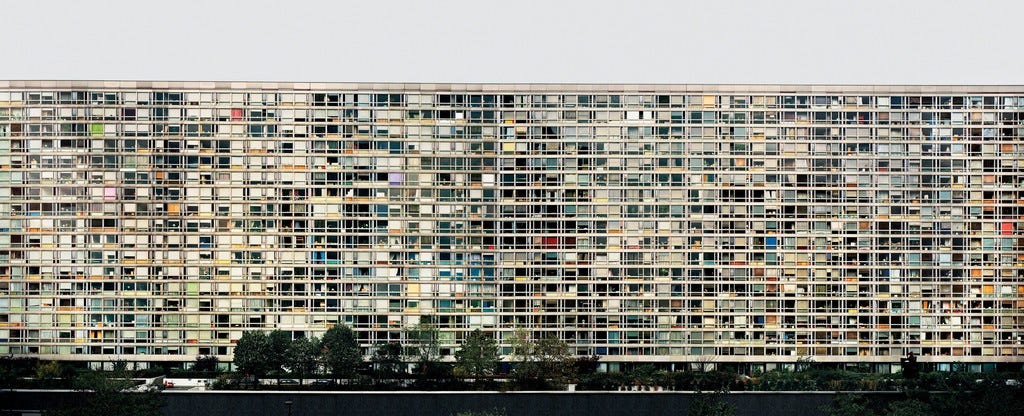
As a response to Gursky, I have used Adobe photoshop to merge 9 portrait images into a panoramic image

Hilla & Bernd Becher
j

As a response to the Becher’s typologies, I have used a more interesting subject: Fort Henry, located in Grouville

Conclusion
- Conclusion (250-500 words): Draw parallels, explore differences/ similarities between artists/photographers and that of your own work that you have produced
In conclusion, whether an image is artificially produced using digital software, cropped and reframed for a desired effect, or intended to be as objective as possible, manipulation is present in every aspect of photography. Although Gursky was taught by Bernd Becher, the styles between Gursky and the Becher’s are
- Bibliography:
Sawa , D. B. (2018), Andreas Gursky on the photograph that changed everything: ‘It was pure intuition’. Location of website: https://www.theguardian.com/artanddesign/2018/jan/18/andreas-gursky-each-photograph-is-a-world-of-its-own-best-photograph-salerno-harbour
Bright, S. and Van Erp, H.(2019). Photography Decoded. London: octopus Publishing House
British Journal of Photography. (2017), Hilla Becher on making art and a life with Bernd. Location of website: https://www.bjp-online.com/2017/10/hilla-becher-interview/
Nayeri, F. (2018), Andreas Gursky Is Taking Photos of Things That Do Not Exist. Location of website: https://www.nytimes.com/2018/01/29/arts/andreas-gursky-is-taking-photos-of-things-that-do-not-exist.html
The Art Story. Pictorialism Movement Overview. Location of website: https://www.theartstory.org/movement/pictorialism/
Photobook layout
Book Name: INCURSION
Initial Layout

Second Layout
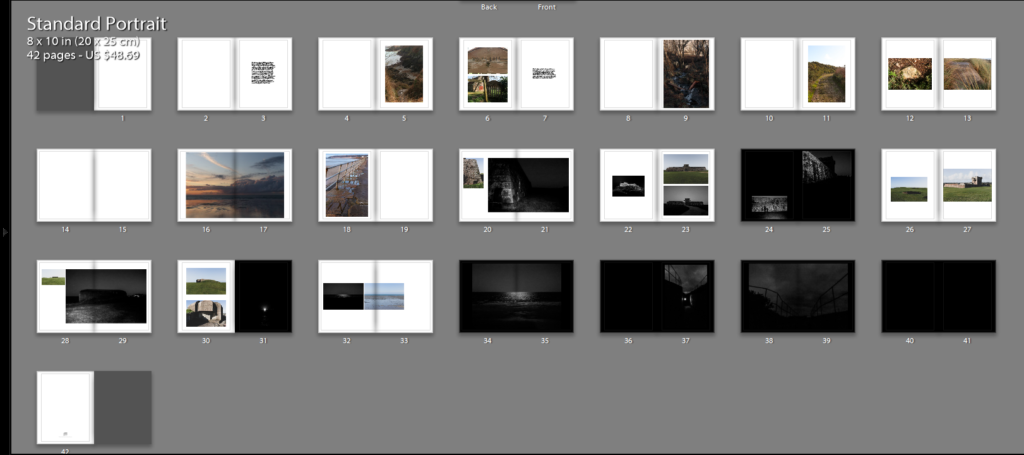
In my second photobook layout, a few of the spreads have been rearranged and sequenced so colourful images are presented in the beginning of the book and gradually the images become black and white. Text has also been added to pages 3 and 7 describing the beginning of what happened in Operation Hardtack 28. The panorama image on pages 16 and 17 from the first layout has been removed and will be printed individually to be applied as a fold-out in the final photobook on pages 14 and 15.
Double page spreads of coastlines have been included in the book to show the landscape which the bunkers were defending.



I have Decided to include two small paragraphs which provide context on what operation Hardtack 28 was, this is crucial for the viewer as I am basing the commando mission as the beginning of my story.


The reason behind the spread showing an establishing shot and detail shot of one of the bunkers located at Fort Henry, paired with a pitch black photograph showing a spotlight is to signify what role the bunker took when defending the Island from allied forces.

Book Specification
Narrative:
- 3 words – Commando, Bunkers, intel.
- A sentence – Documenting a commando raid to gain intel on the German defenses.
- A paragraph – A story about a group of commandos who land at the Wolf’s lair in Jersey through the use of a boat, in order to record and gain intel on the German defences of Jersey.
Design:
- How you want your book to look and feel & Cover – I want the cover of the book to have a hard, rough and textured feel to imitate the texture of a bunker wall.
- Paper and ink – I would like the images to be printed on cartridge paper as it is thick and has a slight texture.
- Format, size and orientation – My book will be portrait and will be 25 x 20 cm.
- Binding – my book will have a perfect stitch.
- Title – My photobook will be called Incursion.
- Structure and architecture – My book will start off at the point of contact that the commandos had with the island during operation Hardtack 28, and the images will visually get darker near the end.
- Design and layout – I will feature a mix of page layouts, including one image per page spread, double page spread images, multiple images per page spread, and a foldout image.
- Editing and sequencing – My images will be in colour and black and white.
- Images and text – I will feature a brief paragraph or two at the beginning of the photobook to inform the reader of what operation Hardtack 28 was.
Understanding Photobook Design
War Sand – Donald Weber

- Book in hand: how does it feel? Smell, sniff the paper. – The texture of the paperboard cover feels rough, and the book is slightly heavy.
- Paper and ink: use of different paper/ textures/ colour or B&W or both. – The majority of the images are in colour. However, a few images are black and white. A range of paper is used in the book including smooth, glossy paper, coloured paper (Colours specific to the book include: Green, yellow, pink, and black). Different quality paper is also used, including standard office/printing 80-100 gsm, Quite thick 160-170 gsm
- Format, size and orientation: portraiture/ landscape/ square/ A5, A4, A3 / number of pages. – The majority of the book features large landscape images with white borders. Occasionally, full bleed images are included. The book is A4 and has 371 Pages.
- Binding, soft/hard cover. image wrap/dust jacket. saddle stitch/swiss binding/ Japanese stab-binding/ leperello – Paperborad soft cover. “Perfect bound” book.
- Cover: linen/ card. graphic/ printed image. embossed/ debossed. letterpress/ silkscreen/hot-stamping. – The paperboard cover is debossed with little pictures
- Title: literal or poetic / relevant or intriguing. the title is literal as the book focuses on D-day and the remnants left behind either on a large scale, or mocroscopic level.
- Narrative: what is the story/ subject-matter. How is it told? The book has many sections.
- Structure and architecture: how design/ repeating motifs/ or specific features develops a concept or construct a narrative.
- Design and layout: image size on pages/ single page, double-spread/ images/ grid, fold- outs/ inserts. Many of the images are double page spreads.
- Editing and sequencing: selection of images/ juxtaposition of photographs/ editing process. The book is separated into different sections. These include: the images of the beaches in Normandy, the microscopic images of the sand collected from the beaches, still life images containing figurines in second world war settings, and also a section containing movie stills from war films.
- Images and text: are they linked? Introduction/ essay/ statement by artists or others. Use of captions (if any.) the images and text are linked as they both focus around the D-Day landings.
Photoshoot 4
Plan
I intend on carrying out a photoshoot to take images of an overgrown bunker overlooking the St Ounes beach. As a response to Andreas Gursky, I will be editing and splicing the images together to form an artificial landscape.
Photoshoot


Selection & Edits




Evaluation
I believe the edited outcome of the photoshoot was a success as I was able to create an improved artificial landscape compared to that of my second photoshoot at Fort Henry. I will be including the panoramic manipulated landscape in my photobook. However, due to the length and detail of the image, I will print it out separately as a foldout for the photobook.
Photoshoot 3
Planning
For my third photoshoot I intend on experimenting with nighttime photography by taking images of Fort Henry and the observation bunkers. For the photo shoot to succeed, I will need a tripod to reduce image shakiness and blurring as the camera aperture will be lower resulting in a longer exposure time. I intend to edit some of my images to use as a response to Eva Nielsen to portray the bunkers as ghostly and dramatic by changing the colour of the images to black and white.
Shoot

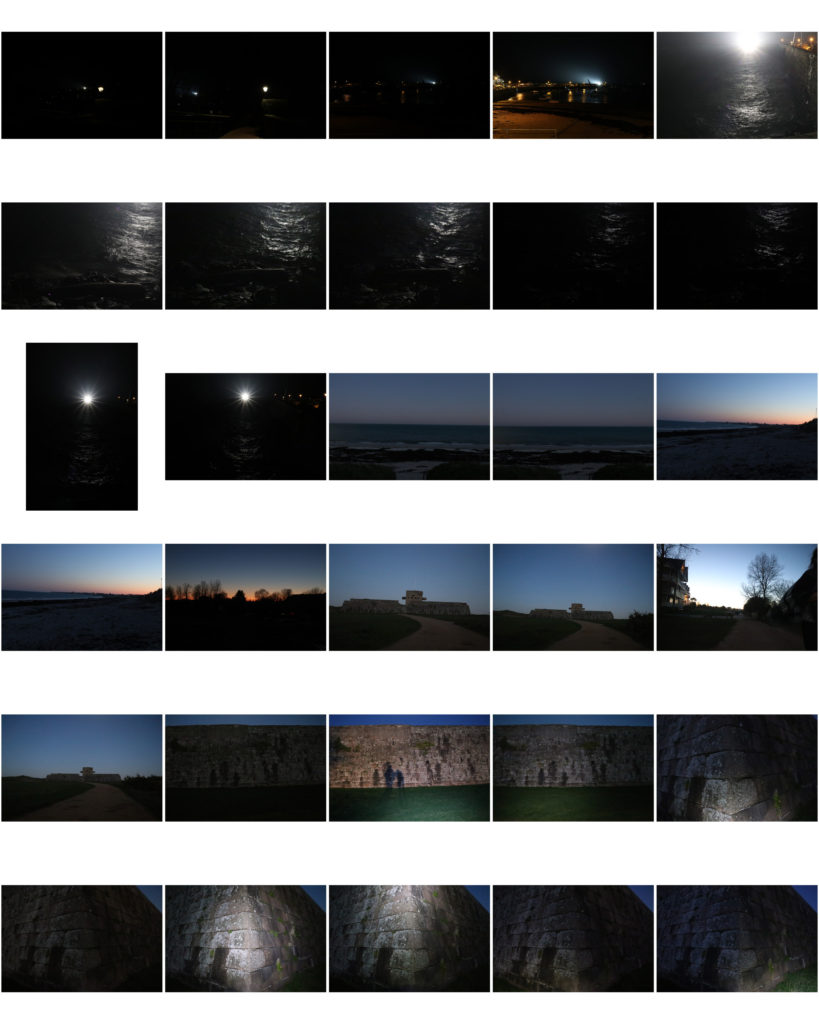

Selection & Edits







Evaluation
I believe the outcomes from the photoshoot are successful as the images do not look blurry. I also believe the edited images are successful in portraying the German defences in a ghostly manner. Overall, I will be using most of the edited outcomes from the photoshoot in my photobook.
Photoshoot 2
Planning
I will be taking pictures of Fort Henry, a coastal defense built before the German occupation which was repurposed into a German defense, and the two spotlight observation bunkers situated to the north and south of the fort. I will be using a tripod for my outcomes in order to capture the subjects as deadpan as a response to the Bechers with their typologies. I will edit a few of my outcomes to create a manipulated landscape as a response to Andreas Gursky.
Photoshoot


Selection & Edits




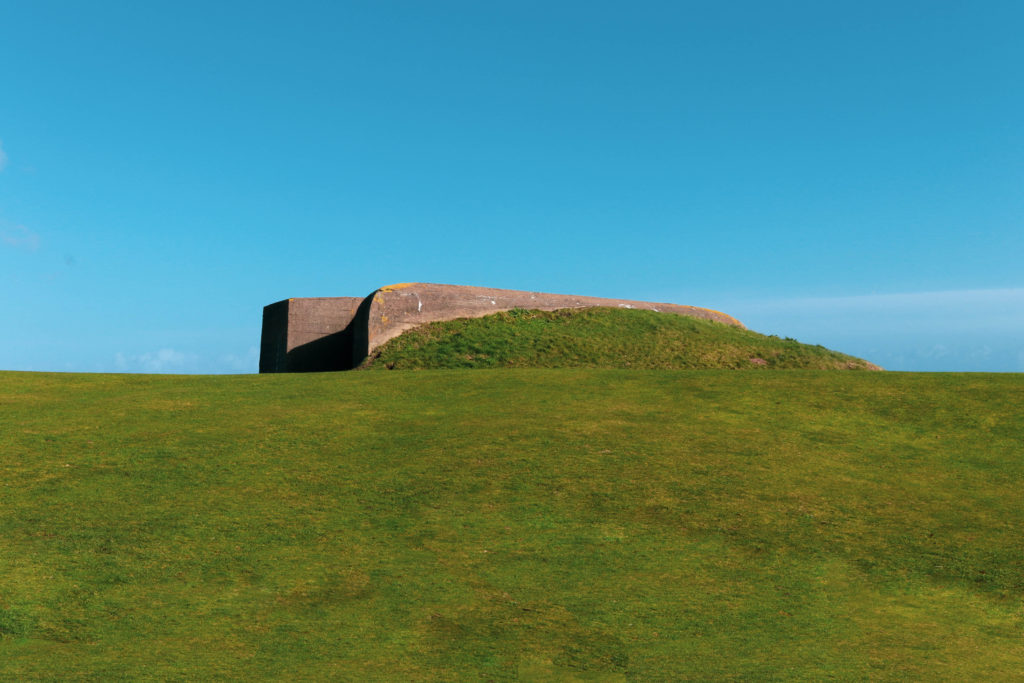


Evaluation
I believe the photoshoot went well as the weather was clear and sunny, which provided good lighting for recording my subjects. I also was able to produce deadpan images in response to the Becher’s typologies, I believe these outcomes were successful as the images were even and flat. I believe I wasn’t as successful when editing my response to Gursky as the borders of two of the images I was splicing together didn’t blend well, resulting in a large section of terrain being lighter.

